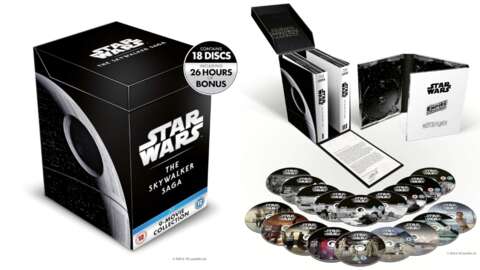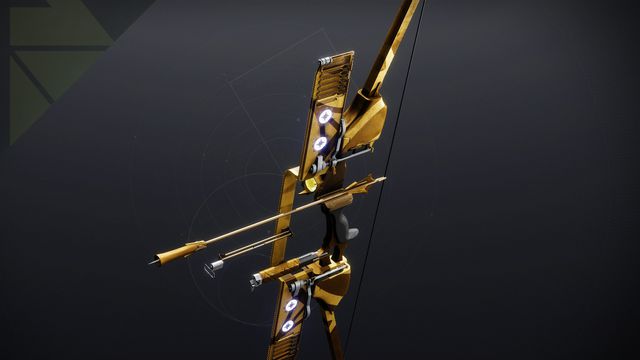The best handheld gaming PCs are everywhere these days. Just a few years ago, a device like the Asus ROG Ally Z1 would have just been a twinkle in my eye, but as AMD has been pushing its APU (accelerated processing unit) technology so hard lately, it was only a matter of time before these once-niche handhelds became mainstream. While the Asus ROG Ally Z1 is a little less powerful than the Z1 Extreme model that launched earlier this year, its more approachable price tag will make it much more appealing for anyone that wants to access their PC games on the go.
There's a catch, though. Because of the lightweight and portable design of this thing, there isn't much space for super high-performance computing. If you were hoping to max out all of your games in a device that fits in your backpack, your best bet is still going to be one of the best gaming laptops. However, where the ROG Ally shines – much like the Steam Deck – is in playing the indie games that make PC gaming so magical in the first place.
So while it would have been nice to have Cyberpunk 2077 running with ray tracing on the go, I'm more than happy to have a dedicated Hades device in my backpack at all times.
Asus ROG Ally Z1 – Design and Features
It's impossible to talk about any handheld gaming PC without bringing up the Steam Deck, but as much as I adore the Valve portable, the ROG Ally is so much more sleek. When I first saw Asus' little handheld PC, I thought the garish RGB lighting would have turned me off immediately, but whether I'm holding it or just admiring it from afar, I love the design of this thing.
Immediately, the first thing you notice when you pull the ROG Ally out of its box is how light it is. Weighing in at 608g (21.4oz), it's about 10% lighter than the Steam Deck and about 30% heavier than the Nintendo Switch OLED, which isn't that impressive. But I can tell you that holding the device, it feels much lighter than the Switch, and I'm pretty sure that has something to do with the ergonomics of the device.
Now, I have very small hands, and my biggest issue with the Steam Deck was how massive it is, making it uncomfortable to hold up during long gaming sessions. You'd think that with the ROG Ally, it would have the same problem, as it's only marginally lighter. But it feels so much more comfortable to hold, and I think it comes down to the size of the device.
There are going to be people who don't like that there aren't the little haptic pads that the Steam Deck has, but by getting rid of those and moving the right thumbstick down, it makes the ROG Ally handle a lot like the Xbox Series X controller. This naturally moves your right hand into a position that supports the weight of the device, making it less of a burden on your wrists during long gaming sessions.
Couple that with the textured grip on the back of the device and you have a handheld gaming PC that just feels a lot better to use. There's a reason the Nintendo Switch went with offset joysticks on the Joy-Con, after all.
At the same time, the Asus ROG Ally looks much more like something a PC gamer would use than the Steam Deck. Valve clearly had a vision for what it wanted the Steam Deck to look like, but it looks straight up boring next to the ROG Ally. The Ally uses a more modern-feeling white colorway, with RGB accents around the joysticks and power button.
RGB lighting is divisive, sure, but it gives the ROG Ally a distinctive flair, and looks really cool if you're playing games in bed at night. Of course, if you don't like the lighting out of the box, you can click the little ROG logo button (it looks like a circle made of little angular shapes), go into the settings and either change the lighting or turn it off.
Speaking of, aside from the face buttons, which are pretty standard Xbox-coded fare, you have four menu buttons on the front. You've got the standard Options and View Button that any Xbox controller has, but then you have a button below the options button that brings up Asus ROG Armoury crate. That will essentially function as your game launcher, as the only other way to launch games is to fiddle around with Windows 11 on the 7-inch touch screen. I recommend doing that as little as possible.

The other button looks like an acute triangle pointing to the right. That will bring up an array of different options, including a power option, control mode, a button that summons the onscreen keyboard and a "show desktop" button. This is way more important than you'd think. Because unlike the Steam Deck, which has an operating system designed from the ground up for a controller, the Asus ROG Ally Z1 runs on a standard Windows 11 install, just with some Asus software to make it a little more usable.
You can get through most things without having to go to the desktop, but installing anything but the 3 game launchers included in Armoury Crate will require you to go to the desktop and poke around. Windows 11 is fine on a touchscreen – the Surface Pro is one of the best tablets, after all – but on this tiny screen it's really easy to misclick things. The pro move is going to be connecting a bluetooth keyboard and mouse to set up this device the first time, but if you don't have one, or you're lazy like me, you'll have to deal with the fiddly Windows touch UI.
There are more buttons, though. On the back of the controller, there are two little paddles marked 'M1' and 'M2'. These are extra buttons you can program to do different things, but what's especially useful about them is they allow useful little hotkey combinations.
For example, if you hold both of the back pedals down and hit down on the D-pad, you'll bring up Windows Task Manager. This is a pain to use on this tiny screen, but at least if you have a program or game that freezes, you have a way to summon the task manager without having to cold-reboot the handheld.
Asus ROG Ally Z1 – 1080p Gaming On The Go?
The Asus ROG Ally Z1 is equipped with a 7-inch FHD display, which is much better than the 800p display on the Steam Deck. However, while the ROG Ally Z1 has a slightly more powerful APU, the extra resolution is going to cause some performance problems if you're not careful – more on that later.
The problem here is that you're going to want to take full advantage of this display. It's a 7-inch IPS beauty rated at 500 nits of brightness and can theoretically reproduce 100% of the sRGB color spectrum. It's absolutely stunning, especially when the brightness is turned up.
In bright, colorful indie games like Hades or Ruiner, the ROG Ally is a sight to behold. It's almost as if a handheld device like this with a bright, colorful display is how these games were meant to be played. However, if you decide to tempt fate by installing Cyberpunk 2077 or another demanding game, the bright display isn't going to make up for the muddy textures and aliasing that going down to 800p or 720p is going to produce.
This is a great glimpse of things to come, though. The only thing holding back this kind of handheld gaming PC from truly taking on the Switch OLED is figuring out a way to get an actual gaming laptop GPU into this thing without liquifying it. I got a glimpse of that future with the Alienware Concept UFO at CES 2020, but reality has not caught up quite yet.

Asus ROG Ally Z1 – Performance
The Asus ROG Ally Z1 runs off a 30W AMD APU with a Zen 4 processor and an RDNA 3 graphics card. The CPU is a 6-core, 12-thread chip with a clock speed up to 4.9GHz. That's very similar to the Ryzen 5 7600X, one of the best processors for gaming right now. The issues come up with the GPU, though.
Because of the limited space for cooling, the GPU only features four AMD RDNA 3 CUs, making for about 256 Streaming Multiprocessors. For comparison, the AMD Radeon RX 7600 – pretty much the bare minimum for playing PC games at high details at 1080p – features 2,048 SMs of the same architecture.
Now there's nothing wrong with having an extremely lightweight GPU here – after all, that's what allows the Asus ROG Ally Z1 to be so thin and light in the first place. This is more to temper your expectations, because in our standard benchmarking suite that uses games with ray tracing at 1080p, the ROG Ally Z1 suffers heavily.
In Forza Horizon 5, on the Extreme preset at 1080p with FSR enabled on Balanced mode, the Ally Z1 only managed to get 18 fps. That's not playable by any definition. However, if you play the game with the hardware in mind, turn down the game to medium, and you get a much more managable 44 FPS. It's still not using the full 120Hz this display offers, but you're essentially playing an Xbox Series X game on a Nintendo Switch, what else would you expect?
Likewise, with Cyberpunk 2077. Turning it on the ray tracing ultra preset limits performance to just 6 fps. But turn it to medium and you get a solid 28 fps at 1080p. It doesn't look as good, but if you want a mobile version of these games, you're going to have to live with a 30 fps experience – at least for now.

What I wasn't expecting, however, was how good the battery life is. While you can drain the battery extremely quickly if you run the thing on turbo mode and enable RGB lighting, turning those settings off and lowering screen brightness to 50% saw the Asus ROG Ally Z1 last 6 hours and 29 minutes in the PCMark10 Battery Test.
This test measures how long a gaming laptop (or handheld in this case) lasts in a variety of different computing tasks. The ROG Ally, impressively, lasts as long as some laptops, and that's without the real estate that allows for a huge battery.
You're not going to be able to go on an 8 hour gaming binge on battery, but plugging the thing in the wall immediately enables turbo mode, which is going to make you want to have it plugged in whenever possible. Luckily, the Asus ROG Ally Z1 charges via USB-C, so you can use whichever charger you carry around in your bag all day for everything else.








